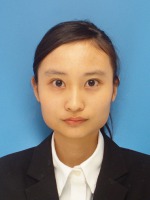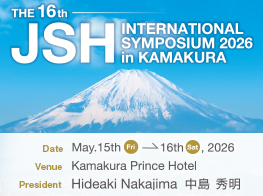
名前:奥田 瑠璃花【京都大学大学院 医科学研究科腫瘍生物学講座】
発表形式:e-poster
Title:
Distinct ethnic, clinical, and genetic characteristics of der(1;7) in myelodysplastic syndromes.
Authors:
Rurika Okuda1, Yasuhito Nannya1, Yotaro Ochi1, Kazuhisa Chonabayashi14, Ayana Kon1, Hideki Makishima1, Tetsuichi Yoshizato1, Yasunobu Nagata1, June Takeda1, Kenichi Yoshida1, Masashi Sanada1,3, Yuichi Shiraishi4, Satoru Miyano4,5, Wolfgang Kern2, Constance Regina Baer2, Niroshan Nadarajah2, Tamara Alpermann2, Claudia Haferlach2, Yoshiko Atsuta10, Senji Kasahara7, Hiroshi Handa8, Shigeru Chiba6, Kazuma Ohyashiki9, Torsten Haferlach2, Yoshinori Yoshida14, Seishi Ogawa1.11.12
Affiliations:
1. Department of Pathology and Tumor Biology, Graduate School of Medicine, Kyoto University, Kyoto, Japan
2. MLL Munich Leukemia Laboratory, Munich, Germany
3. Department of Advanced Diagnosis, Clinical Research Center, National Hospital Organization Nagoya Medical Center, Aichi, Japan
4. Laboratory of Sequence Data Analysis, Human Genome Center
5. Laboratory of DNA Information Analysis, Human Genome Center, Institute of Medical Science, The University of Tokyo, Tokyo, Japan
6. Department of Hematology, Faculty of Medicine, University of Tsukuba, Ibaraki, Japan
7. Department of Hematology, Gifu Municipal Hospital, Gifu, Japan
8. Department of Medicine and Clinical Science, Gunma University Graduate School of Medicine
9. Tokyo Medical University, Tokyo, Japan
10. The Japanese Data Center for Hematopoietic Cell Transplantation
11. Institute for the Advanced Study of Human Biology (WPI-ASHBi), Kyoto University, Kyoto, Japan
12. Department of Medicine, Center for Hematology and Regenerative Medicine, Karolinska Institute, Stockholm, Sweden
14. Center for iPS Research and Application, Kyoto University, Kyoto
Abstract:
Introduction: Der(1;7)(q10;p10) is a recurrent chromosomal abnormality found in 1.5-6% of MDS, 0.2-2.1% in AML and much less frequently in MPN. This chromosomal abnormality has two normal copies of chr 1, one normal copy of chr 7 and a derivative chromosome consisting of the long arm of chr 1 and short arm of chr 7, resulting in +1q and -7q. The incidence by ethnic background, genetic landscape, and the clinical impact has yet to be elucidated for this recurrent chromosomal abnormality.
Aims:
Thus, this study focused on the genetic and clinical characteristics associated with der(1;7) through targeted-capture sequencing analysis of large cohorts (n=95) of MDS from Japan and Germany, and the role of frequently observed variants on the oncogenicity in this particular subtype.
Der(1;7) cases showed a strong male predominance (90.4%), and interestingly, was observed at a much higher frequency in Japanese MDS cohort compared with German MDS cohort (73/763 cases versus 4/944 cases, p<0.00001).
Methods: We collected a total of 95 myeloid neoplasm patients harboring der(1;7), consisting of 84 patients diagnosed with MDS (88.4%), 9 with AML (9.5%) and 2 with MPN (2.1%). Of the 84 MDS patients, 30.5% were low-risk MDS. Targeted-capture sequencing revealed mutational profile with mutations in common myeloid drivers (N=61) in 98% of der(1;7) cases. RUNX1 was the most frequent mutations (42%), followed by EZH2 (26%), and ETNK1 (25%), while TP53, a mutation commonly associated with -7/del(7q) (52%) was only seen in 3% of the cases. Copy number analysis revealed paucity of copy number changes that are commonly observed in myeloid malignancies other than der(1;7), except for +8 and del(20q), which were seen in 18.9% and 27.4% of the cases, respectively. These genetic features suggested that der(1;7) represents a distinct entity in myeloid malignancies, and even distinct from -7/del(7q) although both share common deleted lesions in 7q.
Results: Genetic alteration enrichment analysis showed ETNK1 mutations as the most statistically significant mutation in der(1;7) cases when compared with non-der(1;7) cases, which further subclassified der(1;7) cases into those with or without ETNK1 mutations. Intriguingly, ETNK1 mutated cases were characterized by lack of co-existing RAS pathway mutations and +8. None of ETNK1 mutated cases were diagnosed as AML or MPN and only 1 patient progressed to AML in subsequent observation period, consistent with recent reports that RAS pathway mutations are associated with blastic transformation. Laboratory data analysis disclosed hyper eosinophilic phenotype of ETNK1-mutated cases, as demonstrated by increased eosinophil levels in the peripheral blood (20.0% vs 2.9%) (p<0.0001) and bone marrow (9.6% vs 2.7%) (p<0.01). ETNK1 mutation had no impact on survival (P=0.89) in der(1;7) cases while RUNX1 mutation was associated with poor outcomes. (P=0.1). We also explored the biological role of ETNK1 mutation in MDS pathogenesis, using iPS-derived der(1;7) positive cells.
Conclusion: In conclusion, der(1;7) represents a distinct entity of myeloid malignancy, characterized by male predominance, higher incidence in Asian populations, and specific mutational profile. ETNK1 mutations defines a subtype of der(1;7) featured with a lack of RAS pathway mutations/+8 and hyper eosinophilic phenotype.



